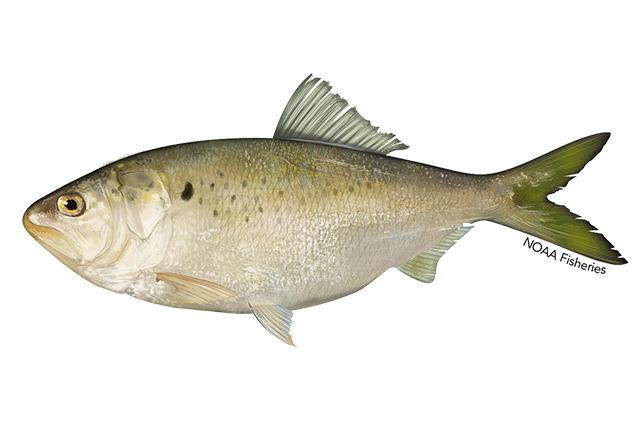Sporting Life

The Art of Bait Fishing for Trophy Rock
By Dennis Doyle
The angling arts comprises many techniques. Generally, there is trolling, fly fishing, jigging, casting synthetic baits, and bait fishing—and each of these approaches has their adherents. The presentation of either live baits or pieces of bait which are part of a target fish’s normal diet is the most popular form of the angling sport, though it is often said to lack challenge and sophistication.
Both beliefs are false. The truth is, not only is bait fishing, from a pure angling perspective, the purist form of the experience, it is also the most productive, the most relaxing and, in its highly developed forms, catches the most and the biggest examples of the target in question.
To be really effective, bait fishing, both from a boat and from shore, requires a deliberate and researched approach. One has to understand the dietary nature of the target species. In the instance of trophy-sized rockfish, or striped bass, that means determining what those fish normally consume in their early spring travels and how the fish locate it.
Since large rockfish although generally born in Chesapeake waters do not typically live in the Bay, older trophy-sized bass become almost completely migratory as they mature, traveling in schools and living along the northeastern seaboard and near-shore Atlantic waters. They are an anadromous fish, only returning to the Chesapeake each spring to spawn where they were born in its freshwater tributaries.
One of the more desirable foods they encounter along their migratory routes are bloodworms. These protein intense organisms grow to 14 inches or more and are found in great numbers on the mud flats and soft bottoms of the tidal, salt water littoral all the way from Nova Scotia to Rhode Island. They are a carnivorous organism, possess four hidden fangs and feed on other worms and small marine organisms. Rockfish locate bloodworms by their highly developed sense of smell, and apparently the big worms exude a lot of it.
Curiously they do not live anywhere in the Cheasapeake, but they are one of the more popular and effective baits used throughout the Tidewater. Most bloodworms are harvested in Maine, where they are numerous, shipped to Maryland and sold in sporting goods stores and general roadside convenience stations.
Bait fishing aficionados have learned by experience that while it is possible to catch a large rockfish with a small to medium sized bloodworm of 5 to 6 inches, it is not likely. What is far more likely is catching a big fish on big bait and a thick, 10- to 12-inch bloodworm (jumbo) is far more likely to score during the spring trophy run. It is worth any effort to acquire the larger sizes of this bait as it is key to enticing the big migrators.
The second most popular bait for giant rockfish is menhaden, a large, oily, protein rich and relatively plentiful bait fish. Also known as bunker, mossbunker, fatback and pogy all along the striper’s northern migratory path, and alewife here in the Chesapeake, menhaden is common in near-shore ocean waters from Nova Scotia to Florida and is the principal source of sustenance for striped bass.
And since this fish is impossible to keep alive in captivity, the best, freshest caught forms of menhaden are the most effective baits, especially for the big fish in spring (minimum legal size of 35 inches). Ground up and used as chum, an attractant, chunks of fresh menhaden are the single most effective bait along with jumbo bloodworms for successfully enticing a hookup with this popular fish. Menhaden is generally available, fresh and frozen, whole and in chum buckets, in most bait and fishing tackle shops everywhere in Maryland close to the Bay.
*****
Fishfinder:
The windy opening days of trophy rockfish season eliminated all but the larger crafts working the Chesapeake but those that did get out did well. Though no distinct patterns emerged with fish being encountered on both Eastern and Western Shores, most charter boats reported good catches of big fish. Trolling was the dominant tactic with bucktails trailing large sassy shad in white and/or chartreuse again the best producer and boats pulling umbrella rigs in the same colors coming in second. The snakehead bite is building steadily on the Eastern Shore down Black Walnut way with bull minnows under bobbers being the dominant theme. Spin anglers throwing 3- to 4-inch paddle tail soft plastic jigs are scoring also. Carp are in spawning mode, and white and yellow perch are still showing up in the tribs though both of those runs are mostly over. Spring is here and all is well.
